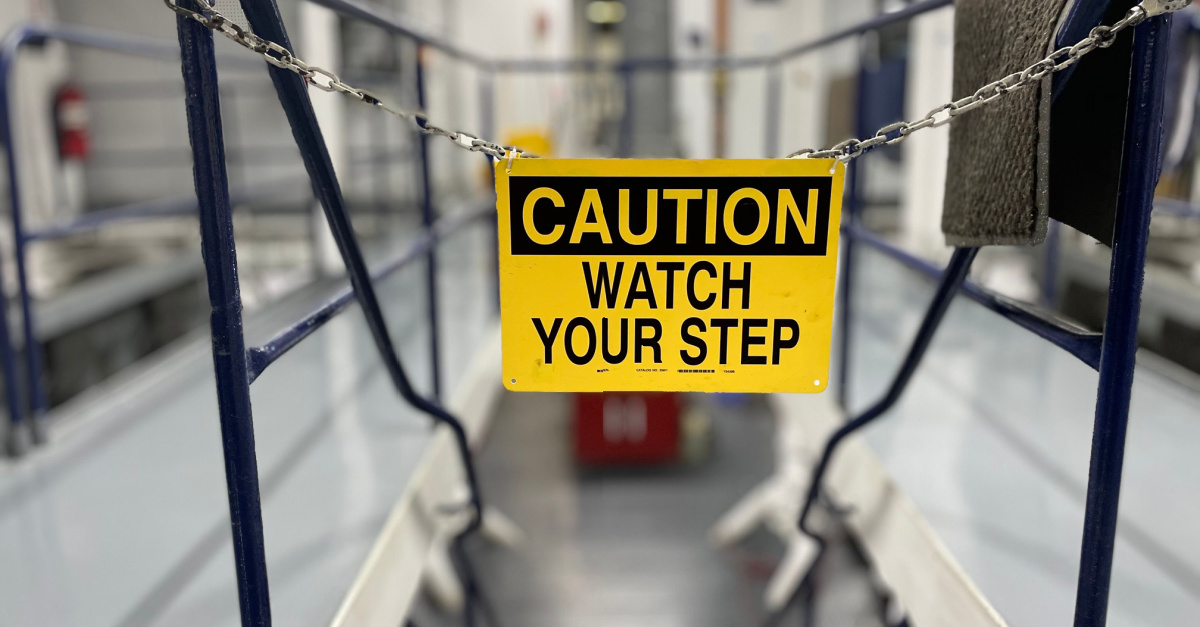Understanding Fall Protection: Importance, OSHA Standards, and Compliance
For the tenth year in a row, fall protection citations lead the Occupational Safety and Health Administration’s (OSHA) list of most frequent violations. Despite the high human and financial costs and heightened awareness, fall protection negligence continues to plague the construction and general industries.
To successfully tackle this problem, the parties responsible for fall protection, much like a three-legged stool, must do their part to succeed. Building owners and property managers must ensure their building complies with OSHA fall protection standards. At the same time, building contractors are responsible for ensuring the site is safe and their team is properly trained on fall protection safety standards and outfitted with the proper equipment to work from heights. Lastly, employees are responsible for adhering to their training and using personal protection equipment (PPE) to carry out their work safely.
OSHA continues to ratchet up fines, inspections, and awareness efforts to reduce injuries and fatalities due to preventable falls from heights. This article covers the role of standards and compliance as it relates to a building owner’s fall protection responsibilities. This article provides insights and resources to help you ensure your building is safe and compliant.
The High Stakes of Fall Protection
According to the National Safety Council, in spite of being 100% preventable, falls are among the top ten leading causes of death and nonfatal injuries. It doesn’t take a fall from very high to sustain injuries. In fact, OSHA’s fall protection requirements apply to employees working at heights of 4 feet or more in general industry workspaces.
Fines for Not Complying with Fall Protection Regulations are Costly
The fines for violating OSHA regulations are steep, costing some negligent parties hundreds of thousands of dollars. Failure to abate the infractions can lead to daily fines of up to $16,131 per day, and willful or repeated violations are ten times that. Fines can add up quickly, especially for willful and prohibitive violations. The fine structure incentivizes businesses to ensure a safe working environment to reduce the likelihood of workplace injuries and fatalities. The message is clear, the cost of non-compliance far exceeds the cost of safety compliance.
Preventable Injuries and Loss of Life
Fatal work injuries increased by nearly 6 percent in 2022, totaling 5,486. Falls, slips, and trips account for 15 percent of those fatalities. In 2022, falls to a lower level and falls to the same level resulted in over 900,000 cases of gravity-induced injuries.
In addition to avoiding fines, and protecting workers, compliance with fall protection standards helps mitigate legal risks and potential liabilities in the event of a fall-related incident. Additional benefits include higher morale and productivity of working in a safe environment and the potential for favorable insurance premiums.
OSHA’s Role in Fall Protection Compliance
OSHA plays a pivotal role in fall protection serving as the primary agency responsible for ensuring safe and healthy working conditions for employees across the United States. OSHA inspectors work to assure compliance through building inspections, addressing complaints, and working with employers to reduce hazards and mitigate risks. Overall, OSHA’s involvement in fall protection encompasses setting standards, enforcing regulations, providing education and training, and conducting research to prevent workplace injuries and fatalities due to falls.
Building Owner Responsibilities and Compliance Strategies
A simplified version of a building owner’s responsibility to provide fall protection, according to OSHA 1910.26 & 1910.28, is to provide protection for anyone exposed to falls or falling objects. Our on-demand webinar, Compliance Simplified: Essential Rooftop Fall Protection Solutions, simplifies this topic by introducing the fall protection hierarchy.
-
- Hazard Elimination: This is the most effective solution to entirely eliminate the risks by removing the fall hazard.
- Passive Fall Protection: This method involves using physical, stationary barriers to protect from fall hazards. For example, installing guardrails or covers to safeguard edges, roof hatches, and skylights to protect against falls from heights.
- Fall Restraint Systems: This type of system is considered active fall protection and prevents workers from reaching unsafe zones.
- Fall Arrest Systems: Another type of active fall protection, fall arrest systems activate after a fall has taken place and stop the fall in mid-air.
- Controlled Access Zones: Use methods like warning lines to heighten worker awareness of dangerous areas. This method is considered the least effective of the five.
Whether installing guardrails or certifying anchor points for rope descent systems, maintaining building compliance is a formidable task if you aren’t up to speed on OSHA’s regulations.
Partner With JOBS-AMST For Fall Protection Compliance
Safety systems play a crucial role in mitigating the thousands of deaths and reducing the hundreds of thousands of potentially life-altering injuries each year. On May 6-10, OSHA is holding it’s national National Safety Stand-Down event to help further educate and raise awareness about fall hazards. It serves as a great opportunity for everyone to take what could be life-saving measures.
As a building owner, we encourage you to take our Rooftop Fall Hazard Assessment to examine your rooftop’s walking-working surfaces and identify potential fall hazards. Complete this assessment to take the proactive step towards a compliant and safer work environment.




